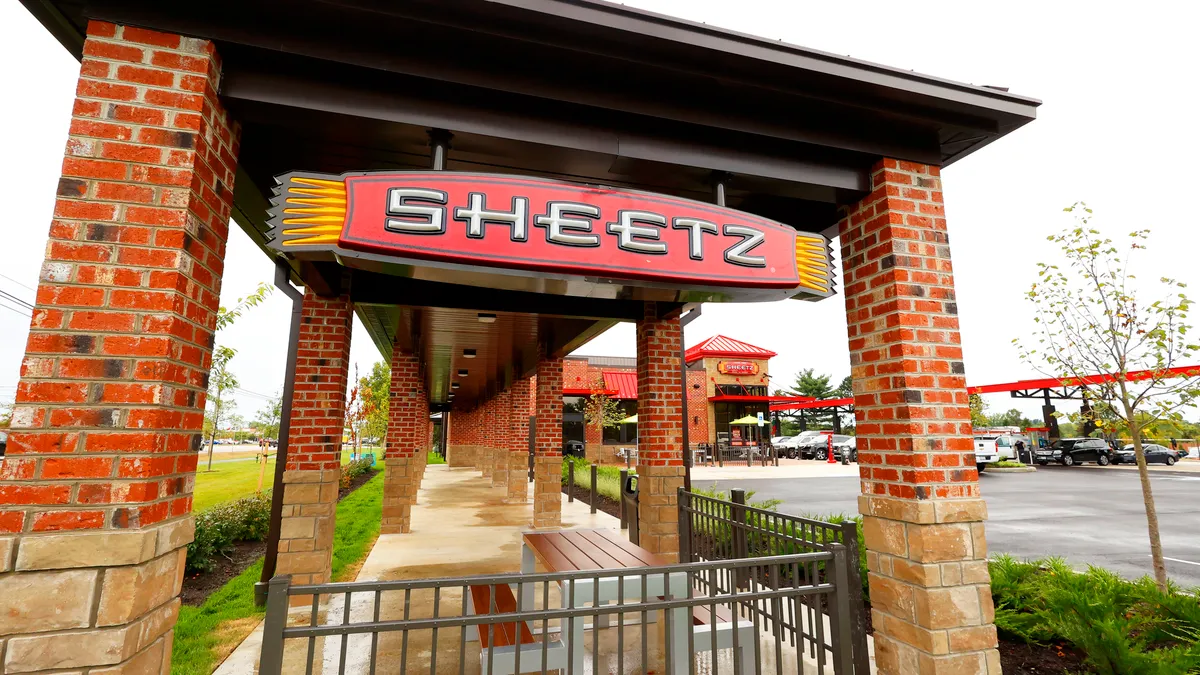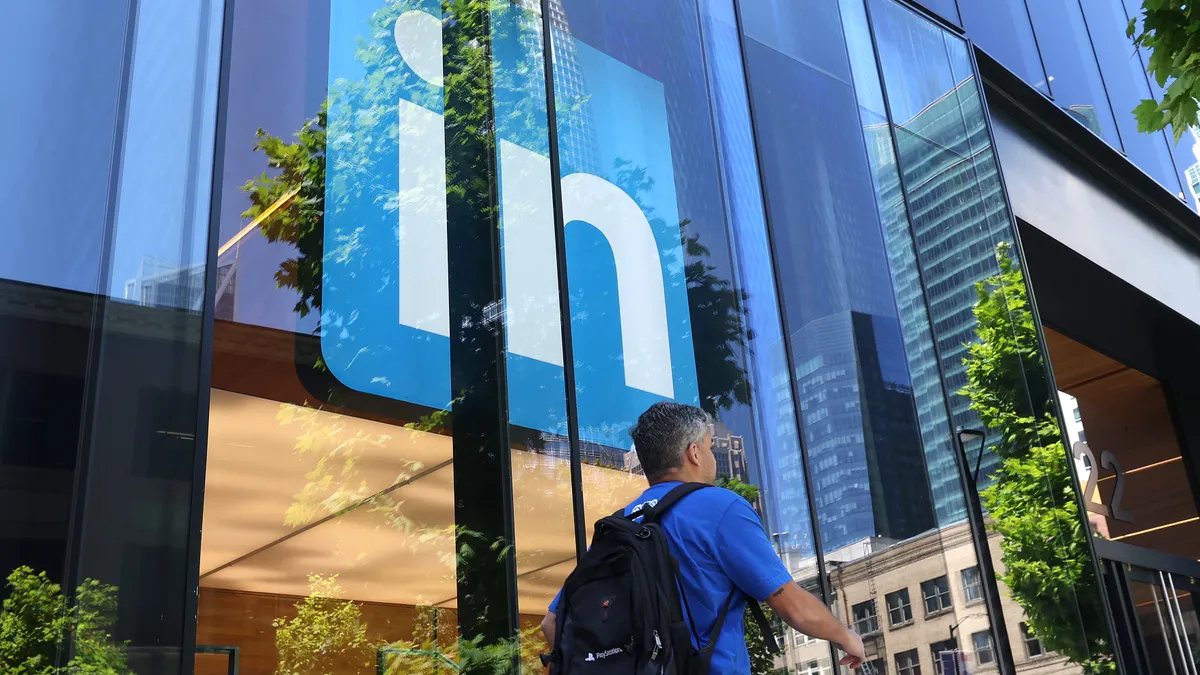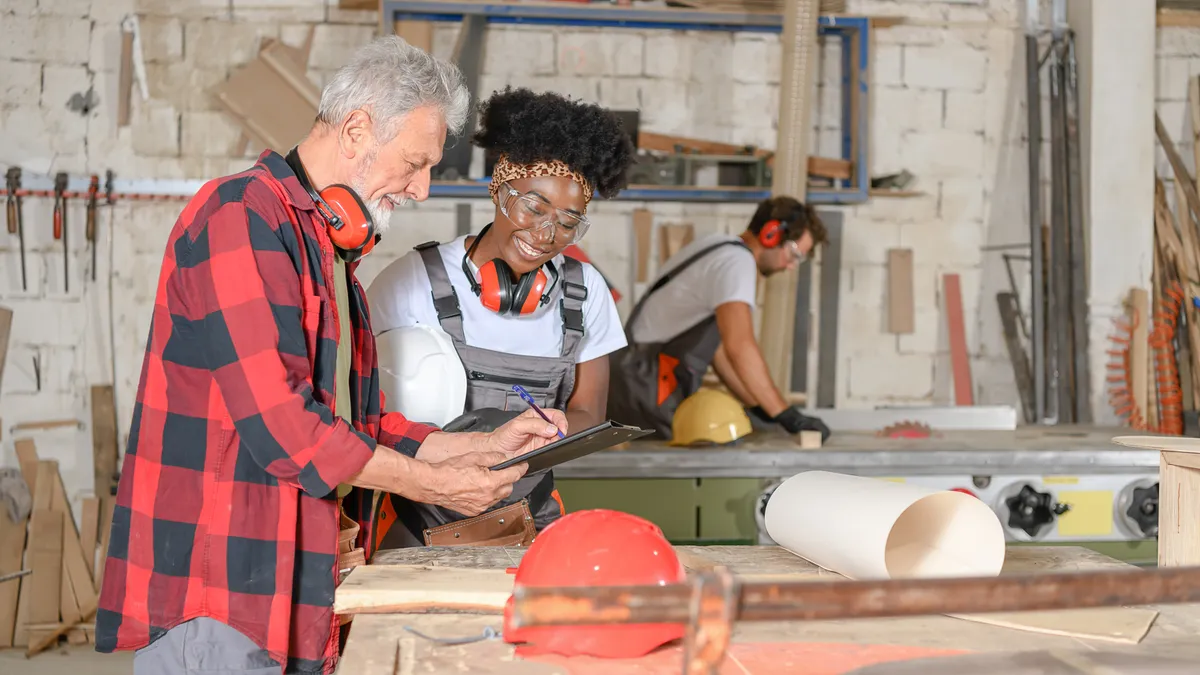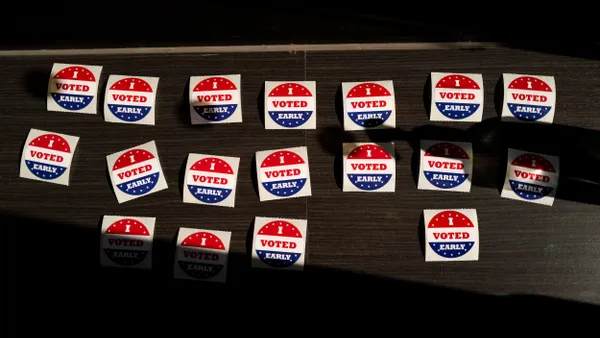This is the first in a series of pieces from HR Dive and fellow Industry Dive publication Construction Dive taking a closer look at the skilled labor crisis in construction, its causes and potential solutions.
Skilled trade companies are desperate for talent.
How desperate? Just listen to the stories of people like Donald "Bo" McNabb, senior instructor in construction management at Indiana State University's College of Technology. McNabb shared a story from his son, a vocational high school teacher who took his class to tour a limestone quarry in Bloomington, Indiana.
"The gentleman in charge of the plant said 'we'll take just about everybody right now who has a good attitude and is willing to learn,'" McNabb said. "'We'll hire them on the spot.'"
For McNabb and others who spoke with HR Dive, the problem is nothing new for construction employers. In fact, sources said they have been aware of the industry's coming talent crunch for decades as experienced workers depart with no clear replacements lined up. An analysis this year of 2019 federal employment data found the median age for construction workers is 41, putting even more pressure on employers to find elusive younger talent.
Now, that ongoing issue meets a labor market defined by the "Great Resignation"; one report last month estimated that more than 1 in 4 workers who started a new job in 2021 left their previous jobs without a new position lined up. Though the motivations of each individual worker may not be clear, observers often tie at least some of that migration to the pandemic.
"When people think about their careers, they jump on an educational conveyor belt," said Casey Welch, CEO of Tallo, an employment and scholarship platform geared toward younger workers. "It may stop for some after high school, after college or after military service, then they go, 'what do you want to do?' But the pandemic has stopped that conveyor belt for some people. They're open to different industries."
Research so far suggests that openness is especially characteristic of younger workers. Survey data published in August by Adobe show more than half of Generation Z employee respondents said they planned to pursue new jobs in 2021, while 59% of this contingent also ranked lowest in job satisfaction among generational groups.
The trouble is, when these workers do seek to pursue new avenues, they are not very likely to put construction in their sights.
Welch pointed to Tallo's April report analyzing survey responses from more than 29,000 Gen Z high school and college students about the brands, industries and career paths they desired. In a ranking of 22 industries, construction placed close to dead last, attracting the interest of 16.7% of respondents. Only forestry ranked lower.
Asked why a generation that is already primed to try new things may not even give their industry a second thought, construction employers, consultants and educators point to a mishmash of factors and a multitude of perceived failures. Still, the opportunity is there, some argue, and it will take a concerted effort to bring future generations to the job site.
An industry in need of renovation
When it comes to building long-term talent pipelines, the construction industry is not what it used to be.
In 2003, there were 1,047,000 construction workers in the U.S. ages 16 to 24, according to U.S. Bureau of Labor Statistics data. This figure peaked at more than 1.7 million workers in July 2006 before bottoming out at 547,000 in January 2010. As of last month, the industry's pool of young workers still has yet to return to the heights it experienced before the mid-2000s recession.
Part of the problem may have to do with candidates themselves, said Paul Crovella, an assistant professor at the State University of New York's College of Environment Science and Forestry who specialises in sustainable construction. Specifically, he said younger members of the workforce simply have less experience working with their hands. As schools shift their focus to training students on computers and software, that may mean less exposure to the more physically-intensive skills required in the construction field.
But the industry has its own complications, including gender, socioeconomic and other stereotypes about who a construction worker is, Crovella said. "That's where, today, construction companies are working very hard to open up and be inclusive," he continued. "It's unfortunate but it's still prevalent enough in the industry that it creates big problems."
Given the next wave of workers comes from a generation that, according to Pew Research Center, is more racially and ethnically diverse than any that have come before it, it may not come as a surprise that some contractors are open about their plans to address diversity and inclusion.
Cincinnati-based Messer Construction funds diversity scholarships at a series of midwestern universities including the University of Dayton and the University of Kentucky, among others. According to Nick Apanius, the company's senior vice president in charge of HR and professional development operations, the scholarships are a way for Messer to give back to institutions it works with to cultivate diverse talent. The company is also working to expand its footprint with historically Black colleges and universities, said Isabel Perez, a recruiter at Messer.
A separate program, Messer's Urban Workforce Development Initiative, seeks to build talent by looking at the same places in which the company builds. Working with local nonprofits, Messer's website says the company provides participants free training, social support and the promise of a full-time job upon completion of the training program.
The company's diversity hiring goal for 2021 is 20% across all positions, one that Apanius acknowledged Messer has not yet met. "We're working on it," he said of workforce D&I. "Over the years, our economic development department has made some strides, but we still need significant work."
Messer is not alone; industry stakeholders across the board have launched similar outreach programs, though Crovella said he believes "it will be a generation before we see those kinds of outreach being effective."
Is scheduling flexibility achievable?
Beyond demographics, construction employment also carries with it a perception that the work does not pay well or is more likely to be affected by an economic downturn than other fields.
These fears are not entirely unfounded, said Priya Kapila, compensation practice leader at FMI Corporation, a consulting and investment banking firm that works with clients in construction, engineering and similar sectors. Historically, contractors sought to control costs in part by leaning on lower base salaries, particularly for entry-level positions, and making up for it with bonuses, she said.
Layoffs that occurred in tandem with downturns such as the mid-2000s recession further the narrative. "There's an inherent challenge of business cycles," Kapila said. "Even today, we've seen people exit the industry who are less inclined to come back."
That does not play well with a generation of workers who are looking for economic stability, she added. But Kapila noted that construction's reputation as a low-paying industry is not entirely deserved. Particularly for construction management graduates, FMI's research has shown the industry offers competitive pay compared to other sectors. And with a competitive talent market that has led companies across industries to increase wages, "you can't get away with low pay," Kapila said.
Other sources echoed that thought. "If you're a drywall contractor and looking for people, drywall finishing is a skill … you can't just take someone from off the street," said Brent MacDonald, an instructor in construction management at Indiana State. "You have to train them to be a drywall finisher and pay them accordingly. And now that we have this competitive talent market, you can no longer pay someone $13 an hour."
It is not just about pay, however. During the pandemic, many companies adjusted operations to accommodate more flexible ways of working, including fully-remote and hybrid work. The in-person nature of construction work, at odds with home-based work, may have a mixed impact on recruiting efforts.
"People are re-evaluating their inputs or qualities for quality of life," Crovella said, noting that while the pandemic may not have reduced overall interest in construction industry careers, it also may have led to a desire for a way of working that places less emphasis on in-person elements. Some students see the prospect of spending time on job sites as a positive. "For those individuals, it's akin to leaving your office and being able to work across the factory floor."
"If you put a hammer in their hands before an iPhone, you might have a chance."

Donald "Bo" McNabb
Senior instructor in construction management, Indiana State University College of Technology
Flexibility is "still something that the industry is trying to figure out," Kapila said. But the incentive to pursue it is there for employers, she added, particularly because employees in their early 20s may place less value on retirement benefits, profit sharing and other areas that contractors have traditionally advertised to candidates. "You have to really give thought to the total package when you're approaching candidates and think about which components might matter most."
Even before the pandemic, construction industry analysts acknowledged that conflict in expectations between younger workers and the job sites that sought their labor. In a 2016 report by Marcum LLP, researchers Anirban Basu and Joseph Natarelli wrote that millennial employees as a group demonstrated a preference for jobs with flexible work hours. But that expectation "isn't consistent with the bulk of construction activity," the authors said.
At Messer, remote work implies a cultural question. "How are we any different from the folks building the buildings?," Apanius said, adding that even the company's employees who could work mostly from home have demonstrated a desire to be with their teams in-person and see job sites for themselves. "We think people need to be in the office, and I know that's a challenge."
But Messer has implemented flexible work guidelines over the years, even for those who perform in-person operations, he added. That can be particularly important during the pandemic, when workers need to take care of elderly parents, children or other dependents.
Appealing to Gen Z, millennial values
The challenge of marketing construction work may seem daunting at first glance, and that notion is reflected in some of the responses HR Dive received from sources.
"If you put a hammer in their hands before an iPhone, you might have a chance," McNabb quipped when asked how contractors could drum up more interest in the field. "That's what they're competing with."
A number of sources suggested that employers need to appeal to potential workers earlier in their lives. Welch noted that this process can start well before students graduate from high school. "The best place to get that talent is to start to build it," he said. "If you want to get them, get to them early and get to them often."
External groups can play a part in those efforts. MacDonald talked about one initiative supported in part by the Wabash Valley Contractors Association, a local trade group, to implement an exhibit this past summer at a local children's museum. The exhibit allows visiting kids to explore hands-on activities such as drawing, welding and assembling.
Such initiatives could encourage the next generation of workers to "drop the phone and pick up something real," to borrow MacDonald's phrasing, but not all outreach is guaranteed to be successful. He relayed his experience presenting to students at a local middle school. MacDonald said he tried but perhaps failed to help students connect their everyday experiences to construction.
For more recent graduates or even those already in the workforce, construction work carries an entrepreneurial element that could have its own appeal, according to Welch. That some who enter the industry end up opening their own businesses may offer something to financially prudent younger workers that other career paths may not, he said.
Other sources supported this idea. Younger workers have "grown up in a period of debt crisis," Basu told Construction Dive, leading to concerns that college alone will not guarantee them a prosperous future. That could breed interest in the possibilities that fields like construction can provide.
"For instance, many electricians start their own firms, same thing with plumbers and roofers, so on and so forth," Basu said. "And they might find that appealing as well. So there's hope out there, but there has to be a coherent sustained effort by the industry to reach out to these prospective demographics."
The pandemic presents "a terrifying climate to start your adult life and professional life in," Perez said. Younger workers, she added, "want to work for a company that makes them feel like part of the team, that helps them grow."
Perez, who said she is still early in her career and did not originally consider a job in the construction industry while studying in university, believes that the worker-owned structure of Messer played a big role in her decision to join the company. "We all have a stake in the game, [and] everyone is here to lift each other up, to help you grow," she continued. "I knew that was where I wanted to go. That was the most important thing to me."
Technology also can be a tool in recruiters' utility belts. Apanius noted the influx of investment in construction technologies, particularly into artificial intelligence systems that allow engineers to plan projects virtually before they head out into the field. "How we build buildings now is very different from 20 years ago," he said.
Construction employers may look to how other industries dealing with similar shortages have changed their recruiting strategies. Welch touted Tallo's work with the trucking industry to implement gamification into recruiting applications. He has also seen trucking companies highlight immersive technologies, such as virtual reality, that can give prospective candidates a better idea of the work they would need to perform.
Crovella had a similar thought. Contractors, he said, "have the chance to use some of the same immersive technology that has fascinated this generation in other areas." He noted a plethora of examples of companies using VR to simulate welding and other critical skills.
A few sources noted that while these and other strategies may not always land, construction work has advantages that few other industries can boast.
"What we do isn't for everybody," Apanius said. "But at the end of the day, you can look behind you and look at what you created from nothing."
Tangibility. That's another passion driving industry veterans.
"You want to be able to drive by something and say, 'I had a hand in building that,'" MacDonald said. "You can't do that as an accountant working on budgets."
Construction Dive Associate Editor Zachary Phillips contributed to this report.























